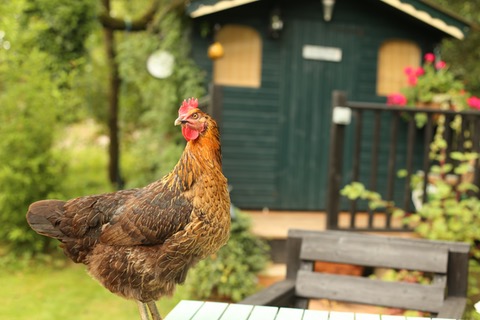Planning to install a new garden shed?
If you are, there a few things you need to consider, read on to find out how to make the most of your new shed by making the right design decisions from the word go.
Location
First and foremost when planning your new garden shed consider the location. If you’re planning to pop it on your allotment, there will probably be guidelines relating to the size that you’ll need to follow.
You also need to think about the terrain, weather and light too. Do you want a Shepherd’s Hut style retreat to fit into a rural setting or something more suited to a modern setting?
Look at the location first, as this will inform many of the subsequent decisions you’ll make about the design.
Consider the position of your shed on your plot, especially in relation to the boundaries, as there are some restrictions on this and the size of your shed.
Aesthetics
One of the most important considerations is the aesthetics of your shed. How will it look? What do you find appealing and pleasing to the eye?
Do you want to inject a little personality into your garden shed, give it a Doctor Who, beach hut or ice cream van theme?
Consider the materials you’re using and how you want to decorate it. Will you stain the wood or paint it? Add bunting or flowers outside the door? Look online for a plethora of design inspiration.
Purpose
Image Source – houseandhome.com
Another important consideration is the purpose you intend to use your shed for. Do you want a haven away from the hustle and bustle of your everyday life?
Alternatively, are you hoping for a place in which you can carry out your hobbies, an artist’s studio or a setting for your model train set?
Do you want a little decking or porch outside on which you can sit? Perhaps you merely want some extra storage for your garden tools and mower.
The purpose of your shed will influence many of the decisions you’ll make about the design. If you intend to spend much time in your shed, you’ll need to consider how best to install a source of power.
Will you need a source of electricity? Do you have tools or equipment that you’ll need to plug in? Do you need a lot of storage fitted for the latter? Will you need additional light? How will you keep warm and comfortable?
Suitable Base
The single most important thing you need to do to guarantee a successful and long-lasting build is to ensure your base is 100% level.
Oftentimes, the human eye is not sufficient in judging this, so it’s strongly recommended to use a spirit level, not only for your peace of mind but also to save you lots of time and hassle in the long run.
To explain, an uneven base makes construction difficult and will most likely lead to ongoing structural problems, such as the roof not sitting right, which will eventually cause cracks in the timber and subsequent issues with water ingress.
Concrete is, without a doubt, the best overall material to use for a base – it’s hard-wearing, durable and suitable for virtually any size and weight of shed.
For further protection and stability, cover the entire base area with a damp-proof membrane; a plastic sheet that sits under the freshly laid concrete and acts as a barrier to prevent ground moisture from rising.
This greatly helps in prohibiting condensation and dampness which cause the shed to deteriorate over time.
Some construct a base using patio slabs as they are quick to lay and fairly cost-effective, you just have to ensure the sub-base is compact and covers an area bigger than the size of the actual shed.
Others choose a timber base, however, these are prone to warping and will eventually rot. Given this, concrete is usually the safest and most reliable choice.
Follow these steps to give you a better in-depth understanding of how to lay a concrete shed base.
Windows
Pay close attention to the windows that you’ll incorporate into your garden shed. The more natural light you have in your shed, the less you’ll need additional light sources.
Consider also the material you’ll utilise for your window frames. Use a natural material for the frames if you want your shed to have a more traditional look.
There you have it, a few things to consider when designing your new garden shed, we hope you’ve found it useful.
